Report: Why boards are so expensive and prices could soon tumble
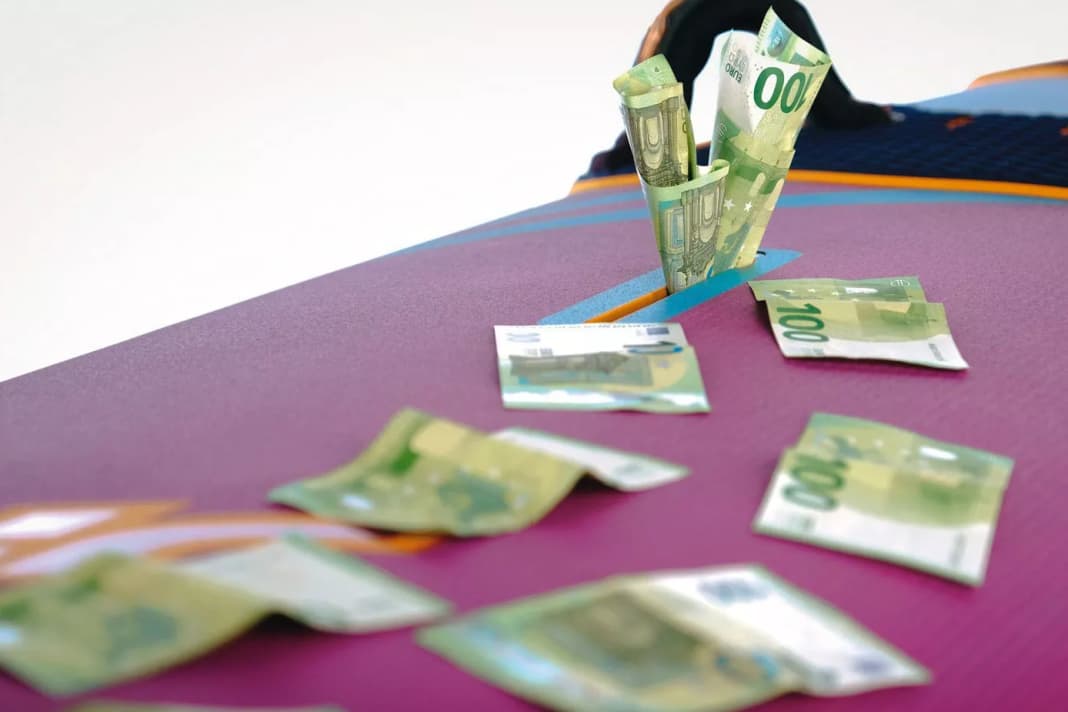





The wide desk is as tidy as a Harry Nass surf centre. Papers are stacked on edge, not a crumb of sand to be seen. Flo Brunner, importer for Starboard and AK Durable Supply, sits in one of the big hubs for surf equipment in Germany. He rattles off freight costs, margins and dollar exchange rates from the last few years - like an accountant after his third cup of coffee. During our price research, we also meet Manfred Rassweiler, Managing Director of the Pryde Group and Craig Gertenbach, Brand Manager of Fanatic. All of them are definitely fanatical water sports enthusiasts who practise the balancing act between business and boardshort and seem just as committed to juggling the numbers as they are to the wing. The upcoming price increases - you can really feel it - are not really a source of joy for anyone.

The main price drivers are quickly identified: Increased transport costs and the changing dollar exchange rate. From a freight forwarder's point of view, boards are pretty ungrateful. In relation to the value of the goods, simply too few go into a container. A sea container full of iPhones probably doesn't cost any more, but for such high-priced, small units, transport plays a much smaller role in percentage terms. "Apple has even built its own airport in China," says Manfred Rassweiler, "transport costs are less relevant for such products, they primarily have to be delivered as quickly as possible and just in time, so interest and capital commitment play a much greater role."

Freight costs - the main price driver for boards
A 40-foot container from Asia, whether from China or Thailand, cost around 2,000 euros before coronavirus - when all brands were quoting roughly the same prices. However, the shipping companies would not be the intended successors to the buccaneers of the seas if they had not tightened the price screw really painfully during the pandemic, freely according to supply and demand: to 16,000 to 18,000 euros.
"Our freight costs were extremely volatile in 2021 and 2022, going from two per cent of the value of goods to eight per cent for neoprene - and then again from eight to 16 per cent," reports the NeilPryde boss. "For boards, we were at around four to five per cent in 2019 and are now at 15 per cent of the value of goods." Costs that were largely not factored into the final price in the shop for 2020 and 2021 - because nobody could have expected them. After all, the calculation for 2020 was at the top of the to-do pile in summer 2019 at the latest. And at the time, Corona was just a mediocre Mexican beer. "We haven't really factored in the increased transport costs over the last two years," says Gertenbach, "even though these have risen from 25 euros to 150 euros per board." This therefore hits the 2023 products all the harder.
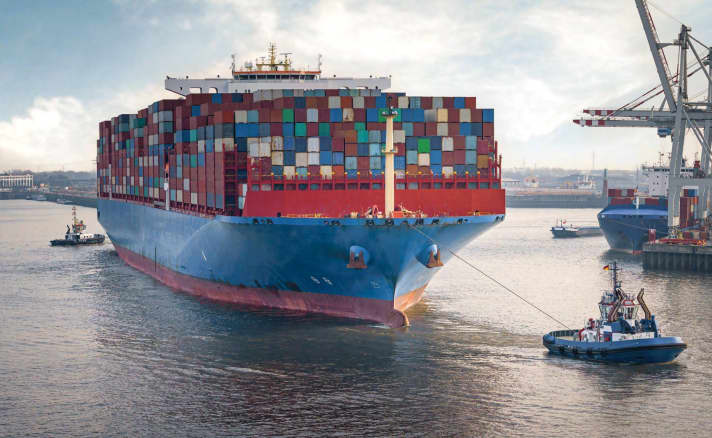
Factor 2: The dollar exchange rate
While boards are naturally more affected by freight costs than wings, the dollar exchange rate in turn makes the wing manufacturers in particular sweat. "We can pay for boards from the producer in Thailand in euros," explains Craig Gertenbach, "but the dollar still has at least a strong influence because the producer buys raw materials in dollars." For wings, on the other hand, which are often produced in China, the green dollar notes are always due. Here, the exchange rate has a full one-to-one impact. And "it was once at 1.22 (editor's note: in autumn 2020) and has since fallen below parity," says Gertenbach. In other words: without any additional services, almost 20 per cent more euros were suddenly gone from the account when paying in dollars than before.

Experts claim that, based on strict commercial calculations, the price would have to be increased by 25 to 30 per cent given these factors. JP boss Rassweiler even claims: "We have tried to pass on price increases as little as possible - at the expense of our margin. And we are trying to save on costs by reducing expenditure on R&D, marketing and the team from six to four per cent.
The question remains as to how the RRP, as the recommended retail price at which a board is sold in a shop, is created in the first place.

Shrinking margins for boards?
Brands, importers and shops are not playing margin monopoly, and the final board price is not determined by dice, but is the result of serious calculations. All products usually go through four stages, from the producer to the brand, the importer and the shop, all of which make a not inconsiderable contribution to the so-called value chain. A contribution that makes the final product in the shop possible in the first place - but which also incurs costs that have to be covered by corresponding margins. This ominous margin, which hovers over every salesperson like their vital infusion, is simply the percentage difference between sales and purchases and is calculated from above. For the retailer, this means starting from the recommended retail price, for the importer from the retail purchase price and so on - via the respective brand to the producers and finally their raw material suppliers. The margin is decisive for the profitability - or sometimes simply the ability of a company to survive.
- 25 %This is the margin that a sales organisation needs, for example, just to cover its costs.
- 18 %Increased purchase price of brands due to the dollar exchange rate.
- 700 %Interim rise in prices for containerised freight.
"If you've never had anything to do with costing, you might think that everyone makes a 100 per cent margin," says Gertenbach, "but then you have to take a calculator and work it out properly." According to our estimates, between 20 and 30 per cent remains per step. Not much compared to a polo shirt with at least twice as high a margin, of which around 40 can be stacked - while there is room for a maximum of one board in a surf shop. With shirts, the necessary advice, service or perhaps even warranty processing are generally not required.
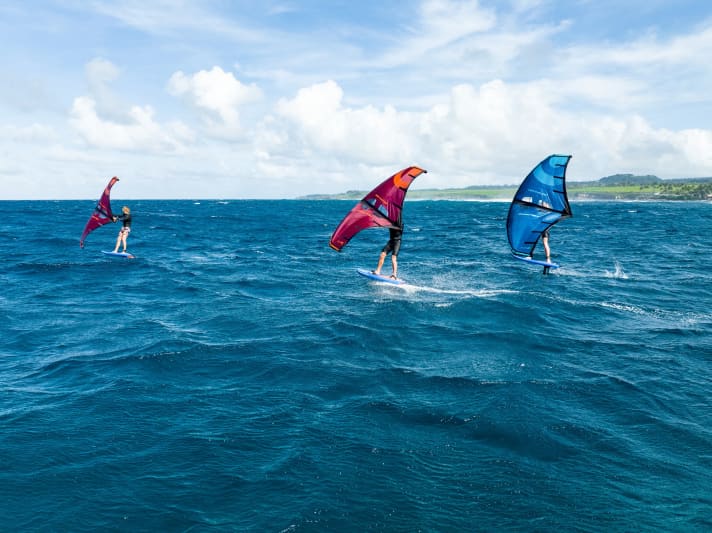
Marketing, team driver and development
In addition to the usual costs for rent, personnel and financing, the margins must also cover marketing. "The big brands invest a lot in development and often bring out new shapes, smaller brands certainly can't afford new shapes as often," adds Fanatic boss Gertenbach. In the end, the team riders also have to be paid from one of the margins - unfortunately, nobody gets rich from the professionals either.
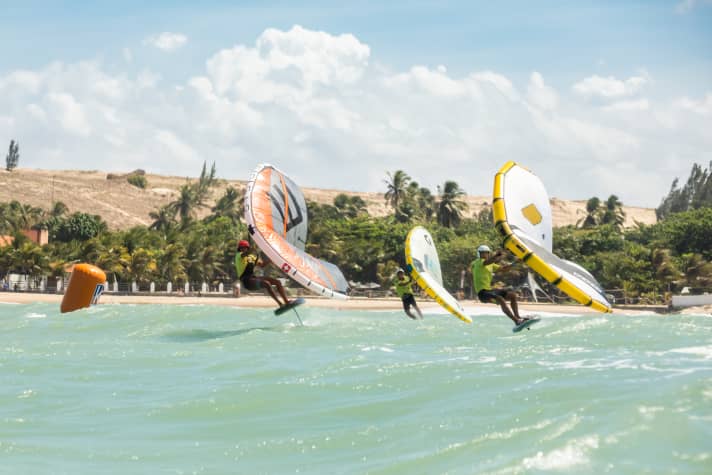
In addition to the team, which provides entertainment and is also responsible for testing and developing the products, the brands provide material for test events: from dealer tests to major festivals. Of course, this is also advertising for your own brand, but it's still a nice free surfing opportunity for everyone.
Large warehouses at the importers also ensure that, ideally, the desired board is available quickly at any time, "if a customer needs a board or wing quickly three days before their holiday," says Brunner. "Customers no longer buy in advance, in winter for the coming season, but only when they need it." Of course, this service is not free. Not only because of the stock-keeping, but also because ordering into the blue carries a not inconsiderable risk. Only around 20 per cent of an annual volume is received by some importers as a pre-order from retailers, the remaining 80 per cent is "a look into the crystal ball", says Brunner. For goods that largely have to be pre-financed.
The price increases in 2023 hurt. The fact that resale prices will remain high in the long term is of little consolation to wingsurfers for the time being. But a completely different development is likely to play into the hands of end consumers: the post-corona depression.
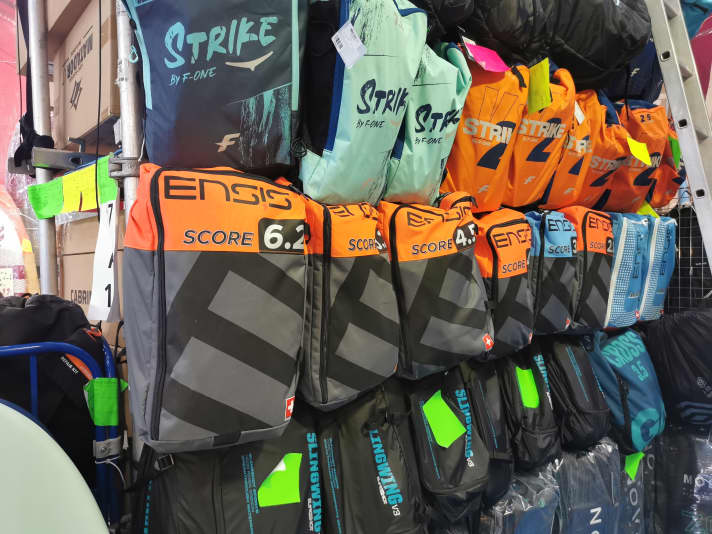
Full warehouses, cautious end customers
During the coronavirus pandemic in 2020 and 2021, the flow of goods from Asia largely came to a standstill. This shortage was met with great demand in the water sports sector. These were good times for sellers, as virtually everything could be sold without a discount. Manufacturers reacted to this boom situation by increasing production. Since the movement of goods has been running more or less smoothly again, suppliers' warehouses have filled up. At the same time, end consumers' appetite for consumption cooled massively as a result of the war in Ukraine, inflation and uncertain energy costs in 2022. As a result, the basic situation turned 180 degrees within a year. A shortage has turned into an oversupply. Many industry representatives are therefore expecting a tough price war and steep discounts in 2023. This is difficult for manufacturers and shops, but should be good news for all end consumers for the coming season.

